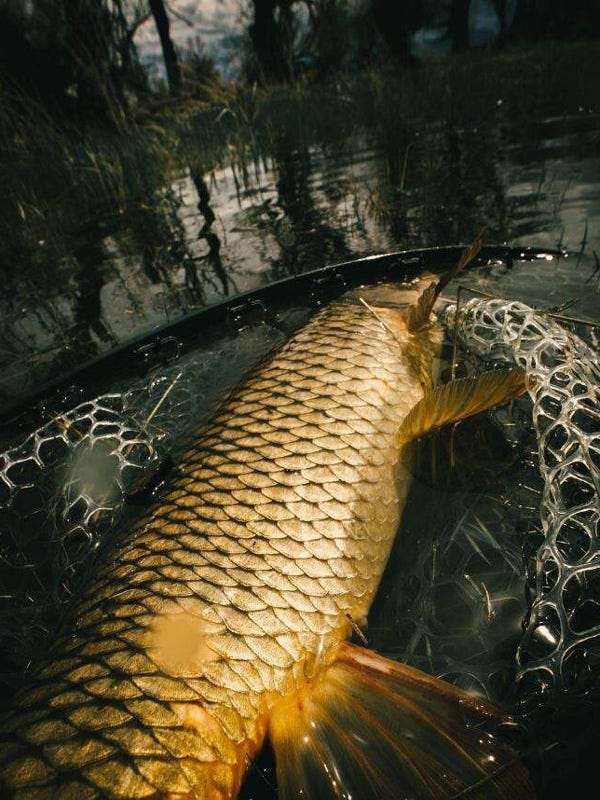Designing Flies for Carp and Freshwater Drum
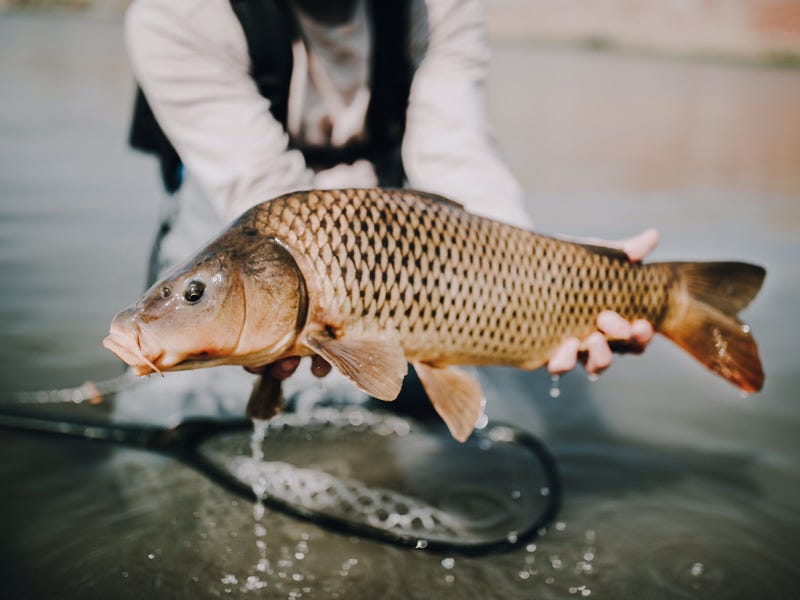
As a fly shop in the mountain west, trout butter our bread, but they are not the only game in town. Many people are looking beyond trout to lots of other fly fishing possibilities. Carp have become a standard topic in the shop and we basically have two camps. Those who have fished for them and can’t believe how fun they can be and those who, for various reasons, have yet to try. In addition to carp, we’ve recently discovered the fun of chasing freshwater drum.

My favorite styles of fly fishing, regardless of whether I’m fishing for trout or any species, involve either swinging flies or sight fishing to specific fish. Often with river carp and drum, I can do both. I hunt for a fish that I can target with my fly. Then I need to factor in the current speed and fly weight so that my fly arrives right in front of the fish. Sometimes I can see them eat it. Sometimes, the distance and the water color, allows me to spot the fish, but not see the fly. I must use my best sense and tactile cues to deliver the fly and make contact with the fish. Either way, it’s extremely fun and engaging fly fishing.
It's time to get with the trout swing season. Read this.
Carp and drum are often found in relatively slack water along river edges or backwaters. In these situations, additional stealth and lighter weight flies are needed. It does not matter if the fish are moving or stationary, the cast needs to be quartered across their path or location so that on the retrieve, the fly intersects them and appears to be moving away. If the fly moves at them, forget about it.
The goal in designing flies for carp and drum is to create a tasty looking package that will be discovered by the fish without spooking them in the process. Carp and drum are opportunistic feeders. They will happily eat just about anything in their environment. Profile, movement, sink rates, and natural colors are the key characteristics you’ll want to factor into your flies.
What's it like to catch carp in Tokyo?
Profile
In dirty water, slightly larger flies are often desired for the angler to track and the fish to find. In clear water, it usually takes a slimmer or smaller pattern to fool them. Carp and drum are wary by nature, so if the pattern is out of place, they will ignore it or even spook the moment they see it.
Since carp and drum are often feeding on the bottom, a pattern that tips upward so that the rear portion of the fly remains in view is often very important. Sometimes, you will need to let your fly sit until the fish has approached it. Other times, you will want to crawl your pattern along the bottom in front of a feeding fish. In any event, you’ll want the hook pointing up toward the fish’s mouth and not down to the bottom.
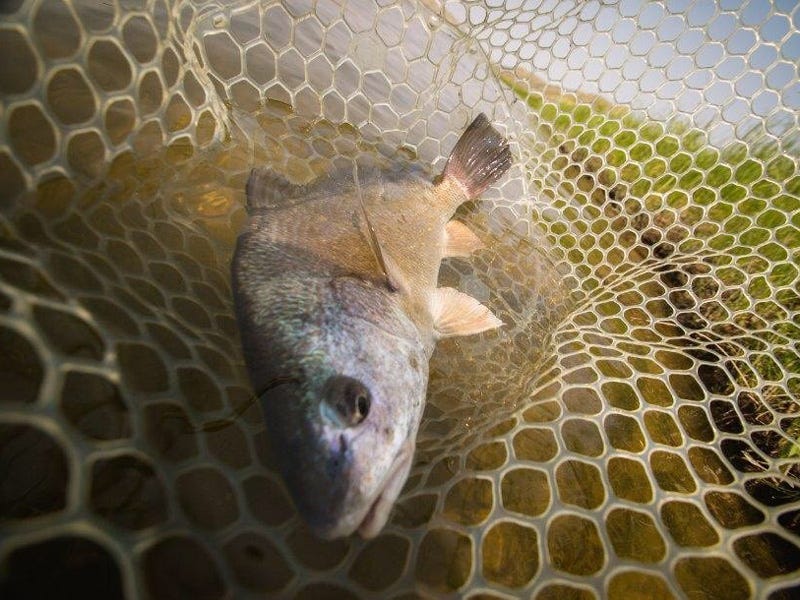
Movement
Carp and drum seem to like flies with soft wiggly parts. You’ll want to use patterns that utilize rubber or silicone legs, marabou, and soft fur, like rabbit or pine squirrel. Movement of the fly as it drifts while crept along the bottom or simply resting is the key to selling it.
Sink Rate
Carp and drum won’t eat your fly if they don’t see it, so sink rate is a major key based on the situation. I often tie the same pattern in three versions; unweighted for skinny water, bead chain eyes for general use, and brass or lead dumbbell options for moderate to heavy current. In most situations, you will be leading the fish by several feet or more.
Ultimately, your fly needs to achieve the proper depth and arrive right near their mouth, so they discover it in their feeding zone. Sink rate is often the single most important presentation factor. If you throw to a fish in shallow water with a heavy fly, the splashdown will likely lead to an explosion of silt and a lost opportunity. Conversely, if a fish is mudding or bottom feeding in significant current, you will need a fly that plunges to the bottom quickly, to put it right in his face.
Color
Keep it natural and relatively drab. Because carp and drum are wary by nature, they do not generally find bright colors or flashy flies to be attractive. Especially, when you find them in shallow water, where they are already on high alert. Olive, tan, brown, and rusty orange are my standby color schemes. I have taken carp and drum on flies in black, blue, and purple, but I tend to keep colors as close to real as possible. As long as the fly fits into their surroundings, it will likely get eaten if your delivery is good.
The exception is adding a hot spot near the head, so it is easier to track the fly. I like to use chartreuse and orange beads or hot colored thread heads. The bright colors are like an underwater indicator to help guide the fly. When a fish is approaching, the hot spots are usually out of their view from behind anyway.
Flies
Ideal when a slim pattern is desired, the chartreuse head makes it easy for me to track in order to guide it into position in front of a fish. The olive/chartreuse balanced leech has been my number one fly for several years when I’m working for feeding, mudding fish in semi-clear water.
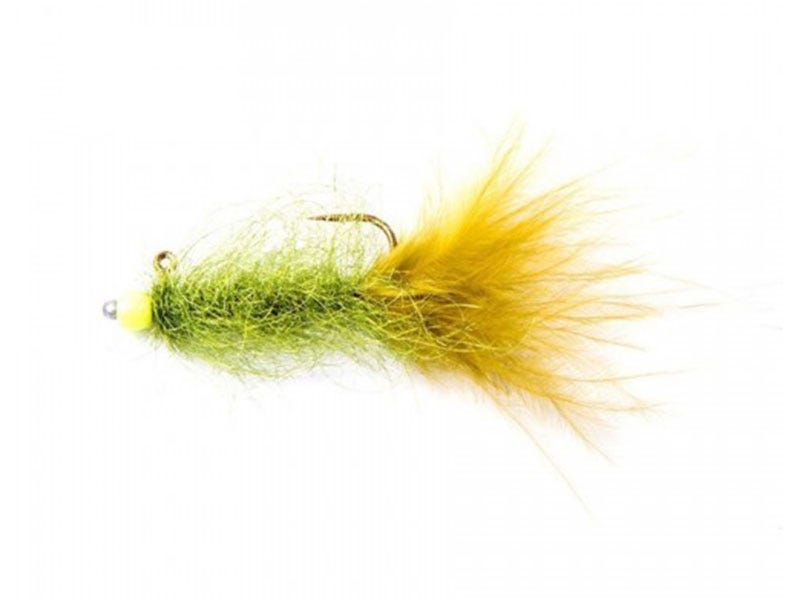
- Carpin Crunch
A carpin crunch is perfect when a little bulk is desired. I imagine this pattern is a suitable representative of a baby crayfish or possibly even a sculpin. In any event, the carp seem to crunch it more often than not. The carpin crunch is tied Clouser style so that the hook rides up. The rubber legs also act as outriggers, keeping the hook upright. It helps the hook stay off the bottom and makes it ready to do its business when it gets vacuumed up by Mr. Rubber Lips.
Crayfish are basically like shrimp and all creatures love to eat shrimp. On the Missouri River where I find Carp and Drum intermingled, there are lots of crayfish. A little chunkier than the carpin crunch, the JZ seems to have just the right balance of sink rate and movement to imitate a crayfish. Olive, tan, and brown are generally best in clearer water while crawfish orange works great in stained water.
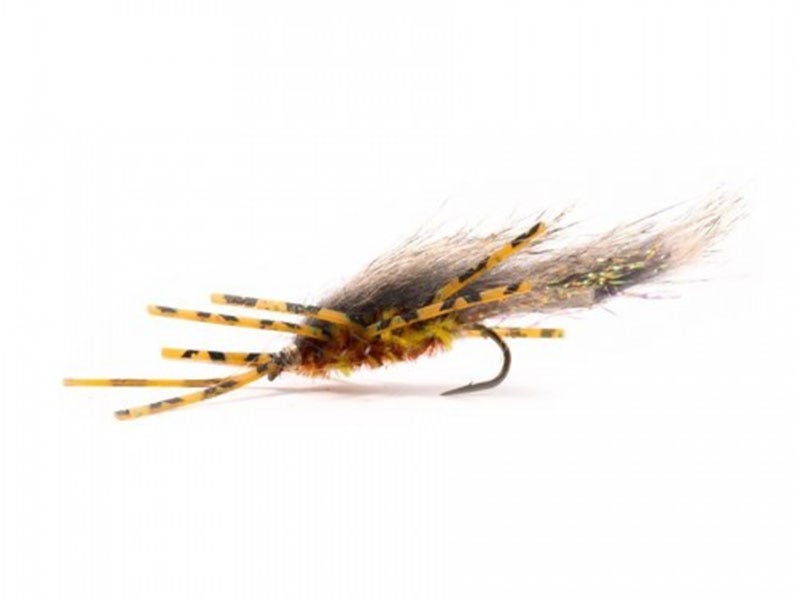
- Hares Ear
In very clear water or along the soft edges of the river, sometimes a small nymph is the only thing you can deliver to a carp or drum and not spook it. While you won’t likely be able to spot your fly, you should be able to see the fish and get your nymph to where they can discover it. Carp and drum will often work over rocks, sucking off caddis and mayfly nymphs as they go.
- Dragonfly Nymph
When carp and drum get picky and snub my usual flies, I get techy and drop shot a floating dragonfly nymph or boobie style fly. Utilizing a floating line, long leader, and a split shot, I can place the shot 4 to 12 inches above the fly and drop it down, hovering it at the level it needs to be. The great thing about this presentation is that you can lead spooky fish by a long way, waiting for them to move to where the fly is hovering and waiting. Sometimes all it takes is a twitch and it’s game on.
- Wooly Bugger
I always carry a few unweighted buggers. Sometimes the good old wooly is the perfect prescription for cruisers or laid up fish in still waters. My personal best carp took a #10 olive bugger.
Need the best fly materials? Order online here.
Think Outside the Trout
If you like to fly fish and you have not given carp or drum a try, I don’t know what you are waiting for. Carp and drum are large, strong, and readily available. When the weather gets hot, the water turns warm and trout fishing gets tough; carp and drum fishing is in its prime. I used to think the sole reason to fly fish for carp or drum was to hone one’s skills for saltwater flats fishing. Now, I chase them because it can be even more fun than saltwater flats fishing. Not only do I get lots of shots at large fish, but I can even do it in my own neighborhood or within a short drive from home.
